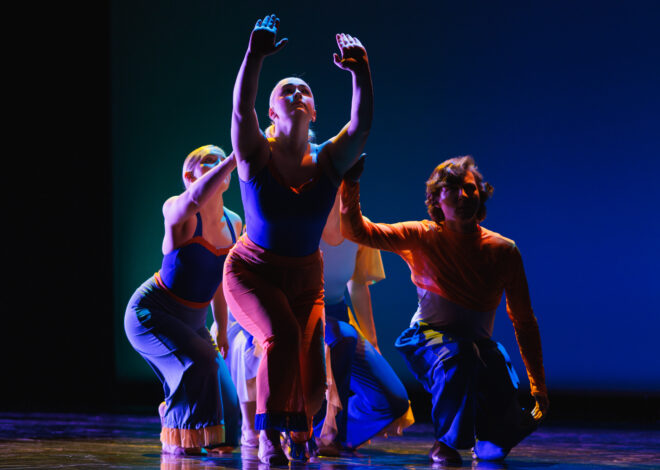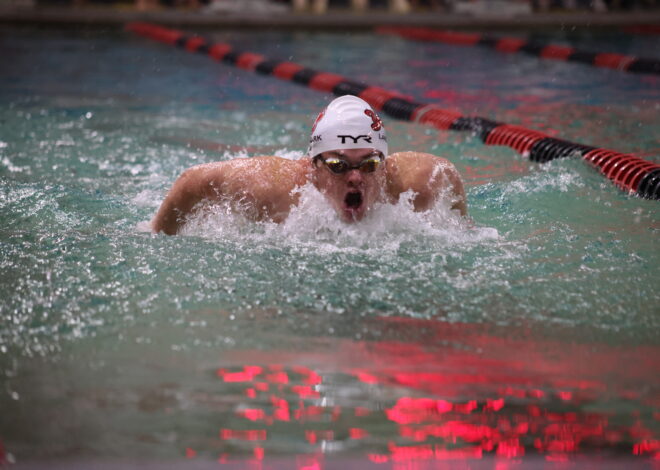A Historic Look at the Very First Dakota Days
The narrative below describing the first Dakota Days parade in 1914 contains language and cultural references that some may find offensive and/or objectionable. It is published here in edited form for documentary purposes. It reflects the values and ideas of the original authors, and the time in which it was written, not those of the current staff of “The Volante,” the Dept. of Media & Journalism or the University of South Dakota.
South Dakota Day has come and gone. It came and went on the same day: namely, last Friday November 20 [1914]. The native townsmen of Vermillion and the oldest members of the faculty are agreed that its like has never before been seen in this vicinity. To begin with, the day was ideal, considering the time of the year. A slight wind from the southeast had enough tinge in it to create enthusiasm. No single cloud hung in the sky.
Acting in accordance with the suggestions of the committee in charge of the arrangements, all those who were to appear in the parade, which was the feature of the day, gathered on the campus in front of East Hall. And there they were gathered–a mighty host. Without doubt a more cosmopolitan gathering ever assembled in the section of the country. There were peoples of all nationalities, races, and description, representing multifarious forms of occupation. The parade formed and left the campus at 10:45. Miss Dakota, the lady of the day, which part was taken by Miss Fern Wassum of Harrisburg, S.D., in a car decorated with red and white bunting, driven by Morrison Barton, led the parade. The members of the Sophomore class, dressed in Indian costumes were next in order. Their makeup was vividly characteristic. Dressed in many colored blankets and bedecked with jewels, beads of brilliant colors, and characteristic aboriginal bedizenment, represented in a striking manner poor Lo, when he roamed the broad prairies of South Dakota many, many years ago before the advent of civilization. The Sophomores, especially the girls, are deserving of much praise for the excellent manner in which they carried on their part.
Very naturally, the cowboys were next in order. Those sturdy, brave and lawless pioneers, who opened the way for permanent settlement in the great West, and who did so much to weave a mystic romance around frontier life. The members of the Junior Law class were assigned the difficult task of playing this part. They performed their task well. A painting by Remington could not have portrayed in a more vivifying manner the general makeup and characteristics of the historic cowboy. The cracking of their automatics, their costumes, and the prancing of their steeds could not fail to remind the spectators of the old stories of cowboy daring and daredevility.
In logical order, following the cowboys, came the early settlers and pioneers. The pioneers, who left their homes in the East and pushed westward to make permanent homes, regardless of the dangers and perils and hardships which surrounded them. These were represented by the Pan-Hellenic associations. They were a hard looking lot. Pioneers would have appreciated the fact that they depicted in true fashion the condition of the men and women who came into this country in the van of civilization. The old slogan of “Dakota or Bust” was much in evidence.
Education always goes hand in hand with civilization. Consequently educational representatives should follow the old settlers. This they did. The Senior Laws had charge of this part of the program. It must be said they their work represented a great deal of time and skill. They reproduced, almost in actual size, the first school house in South Dakota, which was located at Vermillion in the early sixties.
The representatives of the higher educational institutions followed next. Members of the faculty took care of this important function. They had a large float filled with South Dakota products, representing Uncle Sam making an appropriation to the state for educational purposes. Professor Manthey, as Uncle Sam, had a central position on the float, and presented the appropriation. Dr. Jones in the costume of a hunter, played the part of South Dakota in receiving the appropriation.
The farming interested of the state were exhibited by members of the Senior and Junior classes of the College of Arts and Sciences. The tillers of the soil who play the most important role in the affairs of our state, were very ably represented. A hay rack filled with East Hall girls, dressed in simple homespun, eating bananas and cracker jack, and gazing at the high building of the city, was labeled as “South Dakota’s Best Product.” “South Dakota, the Farm State,” was shown by a float containing a sample of each of the products successfully cultivated in the state. A large shock of corn, prolific with golden ears, occupied the middle of the float, and indicated forcibly the chief product of South Dakota soil. Prosperity among the farmers of 1894 was humorously depicted. Three broken down carriages of ancient type, attached to horses who had known the vicissitudes of many seasons, and who showed clearly the lack of proper nourishment. In these carriages were girls dressed in the dresses of their grandmothers, and boys dressed in typical rube fashion. The prosperity of 1914 was demonstrated by a farmer coming into town in a five passenger car, loaded down with chickens, butter and eggs, for the market.
The Engineers illustrated the mining industry of the state. All the implements of the early miner were in evidence. The old pack mule, loaded down with picks, shovels, and a hundred pound box of dynamite was the characteristic feature of this part of the parade. An old schooner carried a sign labeled “Black Hills or Bust,” which was the slogan of the early mining days in this state.
Probably no other group in school went to the trouble and expense in arranging its part in the program than the Medics did. They won the prize, and rightly so. They constructed a float of immense proportions, representing South Dakota as the health state. Definite statistics painted on a large canvass showed the average and local amount of rainfall in the state; the percentage of mortality; and the small number of tuberculosis cases in the state.
The laws appertinaing to the protection of health were also displayed. From the standpoint of work in construction and arrangement, the float was easily the feature of the day.
The Laws were the last to fall in line. They gave a general representation. No parade is complete without a takeoff on the suffragettes. The Laws had gathered together a great deal of feminine attire and decked themselves in them, making typal suffragettes. A band of ten pieces was also composed of laws. “Gills” had an excellent takeoff on Mayor Prentis, many mistaking him for that worthy gentleman. Mr. Mundt played the part of Miss Pankhurst, the famous militant from across the waters. Thus was the parade composed.
After leaving the campus the long line then preceded down University to Main street, and then down through the business section. A very cordial reception was given to the joyous crows by the townspeople. As it was almost train time, the parade then went down the hill to the station to meet the Yankton football men. Upon their arrival the hill was climbed, and after making a circuit through the principal streets of the city, the South Dakota representatives again wended their way back to campus from whence they had started. Then they disbanded and hurried home to get something to eat before the big game. We wish to make special mention of the Lady of Honor, Miss Fern Wassum, of Harrisburg, S.D. She was selected to fill that important position by a large majority, and she fitted into the part admirably. At the conclusion of the parade she was the recipient of many words of praise and congratulations upon the perfection with which she handled the occasion.
South Dakota day is a day unique in the history of the University. It is the first time that anything of the sort has ever been staged here. By all who witnessed it, it was pronounced a howling success. It is not too much to say, then, that the day has come to stay, and that each year will see it bettered and enlarged until it will become a traditional day to University students and alumni.
Special mention is due to the men who did the work to make the day a success. First, President Slagle cast out the idea of having such a day. H.C. Mundt, president of the Students’ Association, took up the proposition and outlined it to the student body, later taking an active part in details. Porter Lowry, chairman of the day worked untiringly to make the innovation a success. Clair Kintz assisted by Emerson and Fisher, built the log house and did themselves very proud. Gilberton, Pool, Farmer, Ellefson, Opperud and Mundt are chiefly responsible for the suffragette divisions. W. L. Johnson engineered the Medic float, the prize winner. Mayteen made the drawings for this float. Gardner, Laird and Slade were the mainstays for the engineers. The Misses Martin and Cummings showed the right spirit, driving “Bill” Thorne’s rig. Krueger, Willy, Brown, Simmons, Steel, Rudolph, Runestad, Misses Glisson, Mason, Stevenson and Elmore had charge of the forming section.


